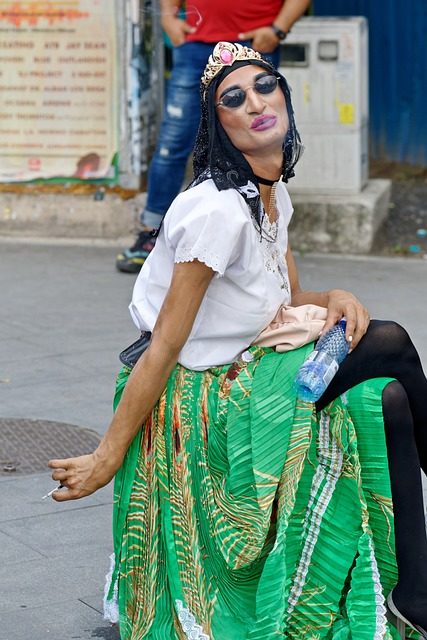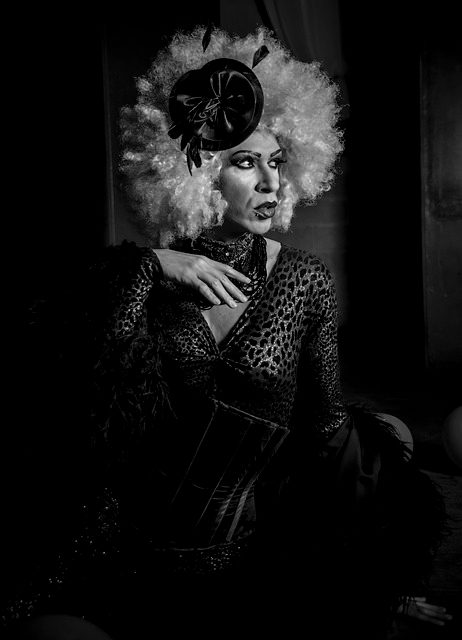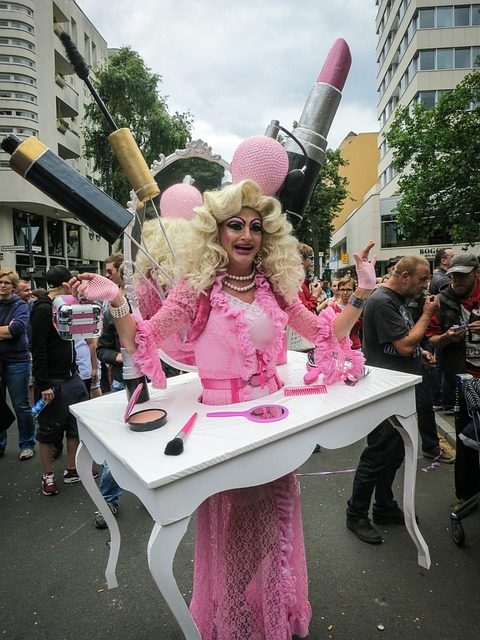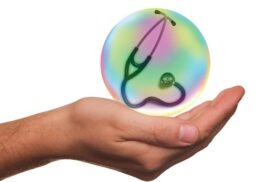Imagine a world where gender boundaries are blurred, and self-expression is celebrated with flair, creativity, and unabashed confidence. Welcome to the world of drag! From its historical roots to its impact on modern society, drag has evolved into a powerful cultural force. This comprehensive guide will take you on a journey through the fascinating realm of drag, examining its history, artistry, fashion, and its influence on society and culture.
Table of Contents
Short Summary
Drag performance is a captivating combination of theatre, fashion, and personal expression that transcends conventional gender roles.
Drag shows are an important form of creative self-expression and social commentary for the LGBTQIA+ community.
Drag has had an influential impact on society by challenging traditional gender norms and providing a platform for political expression.
The Art of Drag Performance

Drag performance is a mesmerizing blend of theatricality, fashion, and self-expression. From drag queens to drag kings, these performers captivate audiences with their unique personas, transcending traditional gender roles for the sake of art and entertainment. In the world of drag, a drag king is a performer who embodies the essence of masculinity, often through the use of elaborate costumes, makeup, and mannerisms.
The origins of drag can be traced back to the first drag queen, William Dorsey Swann, who was born into slavery and later became known as the ‘Queen of Drag’. Since then, drag has evolved into a diverse and thriving subculture, with performers all around the world showcasing their talents and challenging societal norms.
The first drag queen and early female impersonators
The first drag queen, William Dorsey Swann, paved the way for future generations of drag artists and female impersonators. Early female impersonators donned elaborate costumes, complete with long skirts trailing, and exaggerated makeup to create a caricature of femininity. These pioneers of drag helped to establish the art form as a means of challenging gender norms and celebrating individuality.
By defying societal expectations, early female impersonators set the stage for modern drag queens and kings. As they pushed the boundaries of gender roles and explored the world of the opposite sex, they anchored drag within the LGBTQIA+ community, creating a safe space for self-expression and camaraderie.
Drag artists and their craft
Drag artists possess a remarkable ability to transform themselves into entirely different personas through the use of drag makeup, costumes, and performance. By combining elements of theater, fashion, and self-expression, they create captivating characters that both entertain and provoke thought. From the intricate details of their makeup to the bold statements made by their costumes, drag artists showcase their creativity and skill through every aspect of their craft.
Performance is a vital component of drag, as it brings the artist’s persona to life. From lip-syncing and live vocal performances to dynamic dance routines, drag shows are a kaleidoscope of talent and expression. These theatrical displays not only entertain audiences, but also challenge conventional notions of gender and identity.
The importance of drag shows
Drag shows serve as a platform for creative self-expression and provide performers with an opportunity to share their unique voices with the world. They also act as a form of social commentary, encouraging viewers to contemplate their own gender presentation and question societal norms. Drag shows have played a crucial role in raising visibility and representation for the LGBTQIA+ community, fostering acceptance, tolerance, and understanding.
In essence, drag shows are a powerful and transformative art form. They allow performers to explore various aspects of their identity, challenge traditional gender roles, and make political statements. Through their artistry and passion, drag performers create a lasting impact on society and culture.
Slang Meanings and Expressions
The term “drag” has a rich history and a multitude of meanings, extending beyond the vibrant world of drag performance. Its origins can be traced back to Middle English, where the words “draggen” and “dragen” both meant “to drag” or “to draw”. Over time, “drag” has evolved to encompass a variety of slang meanings and expressions, each reflecting a different aspect of the term’s fascinating history.
From the world of smoking to the scientific realm of force acting against motion, “drag” continues to hold a unique and versatile place in our language and culture. Let us delve deeper into some of the slang meanings and expressions associated with the term “drag.”
Such a drag
The phrase “such a drag” is a colloquialism used to describe something that is tiresome, dull, or irritating. It first gained popularity in the 1920s among jazz musicians and was later embraced by the Beat Generation in the 1950s. Today, the expression still carries the same connotation, often used to express dissatisfaction with a situation or to show empathy for someone experiencing something unfavorable.
The enduring popularity of “such a drag” demonstrates the versatility and adaptability of language. It serves as a reminder that the words we use can evolve over time, reflecting societal changes and cultural shifts, while still maintaining their original essence.
Drag as a smoking term
In the context of smoking, “drag” refers to the act of inhaling smoke from a cigarette or other smoking device. This slang term originated in the early 20th century and has since become ingrained in popular culture. The use of “drag” as a smoking term can be seen as a way to make smoking appear commonplace or even glamorous, depending on its context.
The term “drag” has also found a home within the drag community, with performers often incorporating smoking into their theatrical and exaggerated personas. In this way, “drag” as a smoking term serves as yet another example of the term’s diverse and multifaceted nature.
Force acting and main drag
In the realm of physics, “drag” refers to a force that acts in opposition to the motion of an object. This force is a result of friction between the object and the surface it is moving on. The correlation between force acting and main drag is evident, as the force acting on an object is the sum of all the forces acting on it, including the main drag. In some cases, this can be compared to a drag anchor, which resists the motion of a vessel through the water.
The scientific meaning of “drag” is yet another testament to the term’s versatility and adaptability. From the world of drag performance to the laws of physics, “drag” continues to hold a unique and fascinating place in our language and culture.
Drag Fashion and Clothing

Drag fashion is an integral part of the drag experience, allowing performers to create stunning and theatrical looks that challenge and subvert traditional gender norms. With its roots in the early days of female impersonators, drag fashion has evolved into a diverse and thriving subculture, with artists constantly pushing the boundaries of style and self-expression.
From the influence of women’s clothing on drag to the unique styles of Arobin’s drag and cue ball fashion, let us examine the fascinating world of drag fashion and its impact on popular culture and society.
Women’s clothes and their influence on drag
The influence of women’s clothing on drag fashion can be traced back centuries, with early drag queens donning elaborate costumes, long skirts trailing, and exaggerated makeup to create a caricature of femininity. These pioneers of drag fashion set the stage for modern performers, who continue to utilize women’s clothing to create dramatic and theatrical looks that challenge conventional gender norms.
By incorporating elements of women’s clothing into their costumes, drag performers not only create visually stunning personas, but also explore and confront traditional gender expectations. In doing so, they contribute to the ongoing conversation about gender roles and identity, both within the drag community and society at large.
Learn more, visit The History of Drag and Its Influence on Fashion & Beauty
Arobin’s drag and cue ball fashion
Arobin’s drag, a term originating from Kate Chopin’s novel ‘The Awakening,’ refers to a large four-horse coach with seats inside. This unique style of drag fashion is characterized by its vivid colors and intricate patterns, making it a standout within the drag community. Arobin’s drag and cue ball fashion has gained acceptance among drag performers, signifying the diverse and ever-evolving nature of drag fashion.
The impact of Arobin’s drag and cue ball fashion on the drag community showcases the limitless creativity and innovation within the world of drag fashion. As drag performers continue to push the boundaries of style and self-expression, they inspire others to explore their own unique identities and challenge societal norms.
One bright afternoon: A spotlight on drag fashion shows
Drag fashion shows are a dazzling display of creativity, expression, and ingenuity, often referred to as a drag show. These events showcase the incredible talents of drag performers, who don elaborate costumes, makeup, and accessories to create unforgettable looks. These fashion shows not only celebrate the art of drag, but also serve as a platform for performers to share their unique voices and challenge societal norms.
From high-camp extravaganzas to avant-garde runway presentations, drag fashion shows continue to captivate audiences and push the boundaries of style and self-expression. As drag fashion gains mainstream acceptance and popularity, these events serve as a reminder of the transformative power of drag and its impact on society and culture.
The Impact of Drag on Society and Culture

The world of drag has left an indelible mark on society and culture. From challenging traditional gender norms to serving as a form of political expression, drag continues to play a vital role in shaping our understanding of identity and self-expression. As drag gains mainstream acceptance, it has become a powerful force for change, raising visibility and representation for the LGBTQIA+ community.
In this section, we will examine the impact of drag on society and culture, exploring its role in breaking gender norms, making political statements, and becoming an increasingly mainstream cultural phenomenon.
Breaking gender norms
Drag performances challenge traditional gender norms by subverting expectations of gender roles and expression. Through the use of exaggerated makeup, costumes, and theatricality, drag performers defy societal norms and celebrate individuality. This powerful form of self-expression allows performers to explore various aspects of their identity, while also encouraging audiences to question their own understanding of gender and identity.
The influence of drag on society and culture extends beyond the stage, as it challenges long-held beliefs about gender and encourages a more inclusive and tolerant society. By breaking down barriers and pushing the boundaries of self-expression, drag has become an integral part of our cultural landscape.
Drag as a political statement
Drag has long been employed as a form of political expression, using fashion, performance, and self-expression to challenge existing power structures and promote social change. From its early days in cabarets and nightclubs to its modern role in activism and advocacy, drag has consistently pushed the boundaries of what is considered acceptable and normal.
Through humor, satire, and bold artistic statements, drag performers draw attention to pressing issues such as racism, sexism, homophobia, and transphobia. In doing so, they not only entertain audiences, but also create a space for dialogue and reflection on the issues that affect our society.
The mainstreaming of drag culture
Drag culture has experienced a surge in mainstream acceptance and popularity in recent years, with drag queens and kings being featured in television shows, films, and other forms of media. This growing visibility has led to a broader understanding and appreciation of drag as a form of art and self-expression.
The mainstreaming of drag culture has not only introduced LGBTQ+ culture to a wider audience, but also fostered a more inclusive and tolerant society. As drag continues to gain mainstream acceptance, it serves as a powerful reminder of the transformative power of self-expression and its ability to challenge societal norms and expectations.
Summary
From its historical roots to its impact on modern society, drag has evolved into a powerful cultural force that defies gender norms, challenges societal expectations, and inspires creativity and self-expression. Whether through captivating performances, innovative fashion, or bold political statements, drag continues to transform our understanding of identity and self-expression, proving that the art of drag knows no limits. Embrace the world of drag and let it inspire you to challenge conventions, celebrate individuality, and embrace the beauty of self-expression.
Frequently Asked Questions
Can a woman be a drag queen?
Yes, a woman can be a drag queen. Female queens are interchangeable with other drag queens as performers, emcees, hostesses, and spokesmodels. Drag is about embodying a character and being creative in doing so, no matter the gender of the performer.
It is important to remember that drag is an art form, and it is open to anyone who wants to express themselves through it. Women.
Can a straight man be a drag queen?
Although typically associated with gay cisgender men, there are many drag queens of varying sexual orientations and gender identities, including straight men. Examples of trans-feminine drag queens include Monica Beverly Hillz and Peppermint.
Therefore, a straight man can indeed be a drag queen.
Why was it called drag?
Drag is thought to have originated from the age of William Shakespeare when female roles were played by men. It likely derives from the sensation of long skirts trailing on the floor, or the term “grand rag” used for masquerade balls.
Additionally, some suggest the term drag stands for “dressed as a girl”.
Who was the first drag queen?
William Dorsey Swann, known as the ‘Queen of Drag’, was the first documented drag queen.
What is the significance of drag shows?
Drag shows create a safe and accepting space for self-expression, offer an opportunity to challenge traditional gender norms, and support LGBTQIA+ visibility and representation.
They provide a platform for performers to express themselves in a creative and unique way, while also allowing audiences to explore and celebrate gender diversity. Drag shows can be a powerful tool for social change, as they provide a space for people to come together.









